
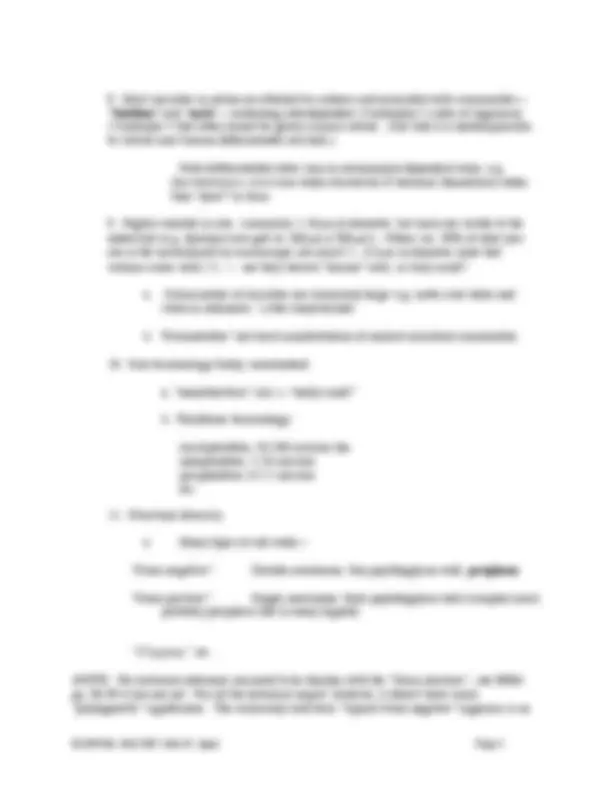

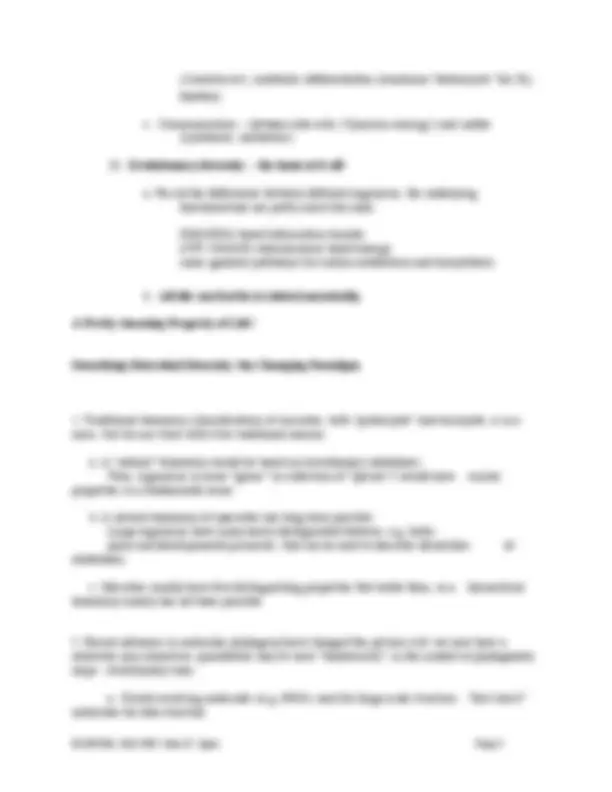
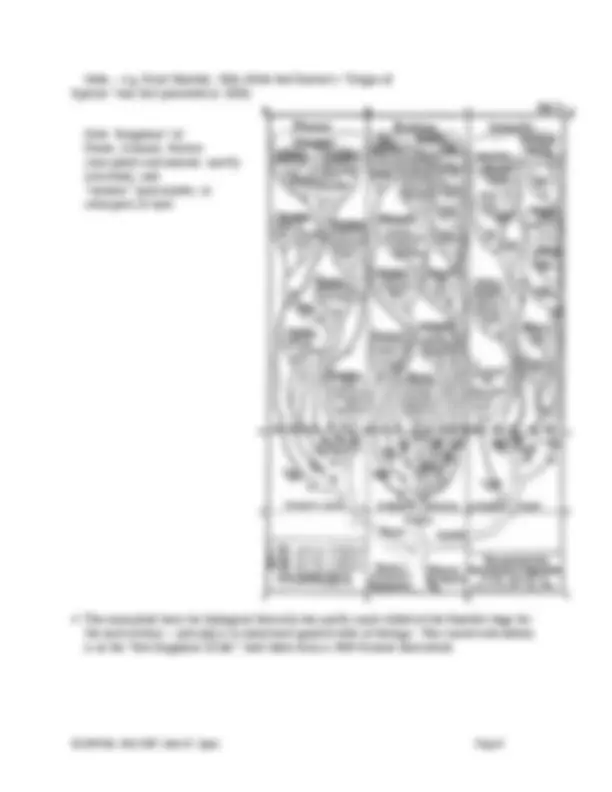
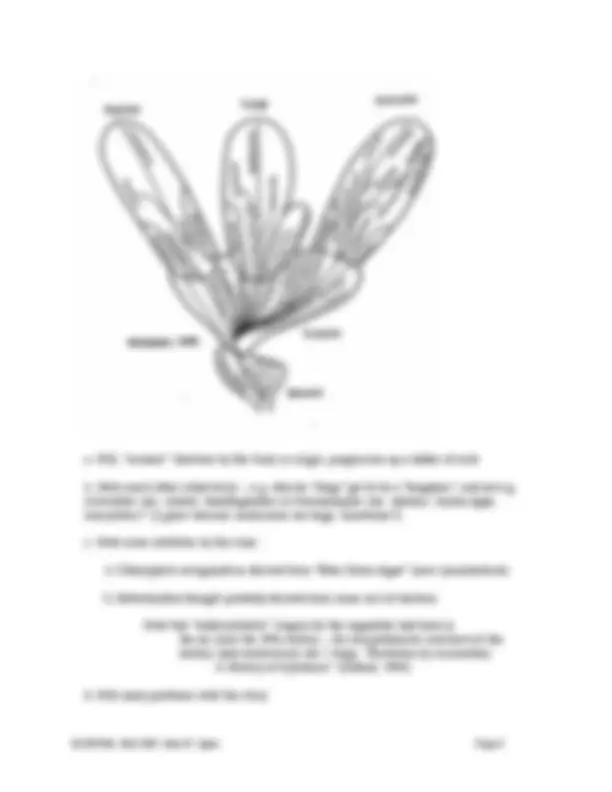
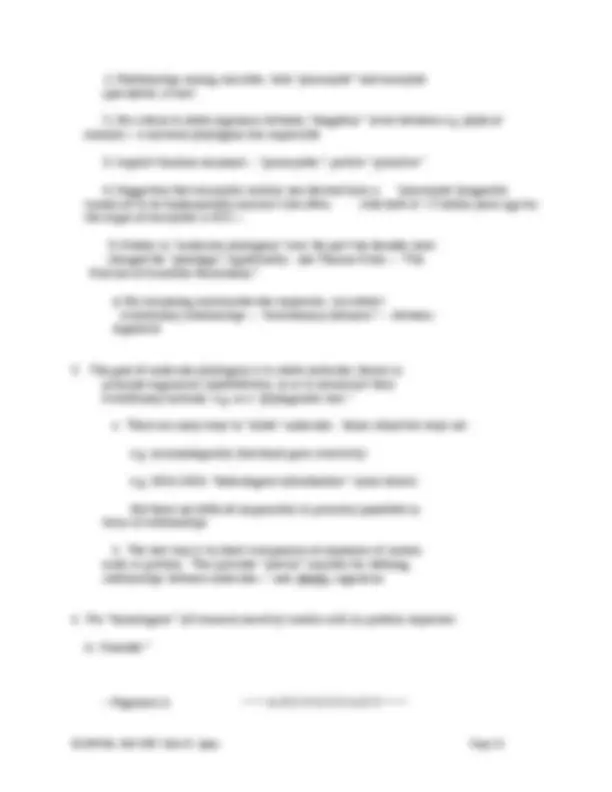
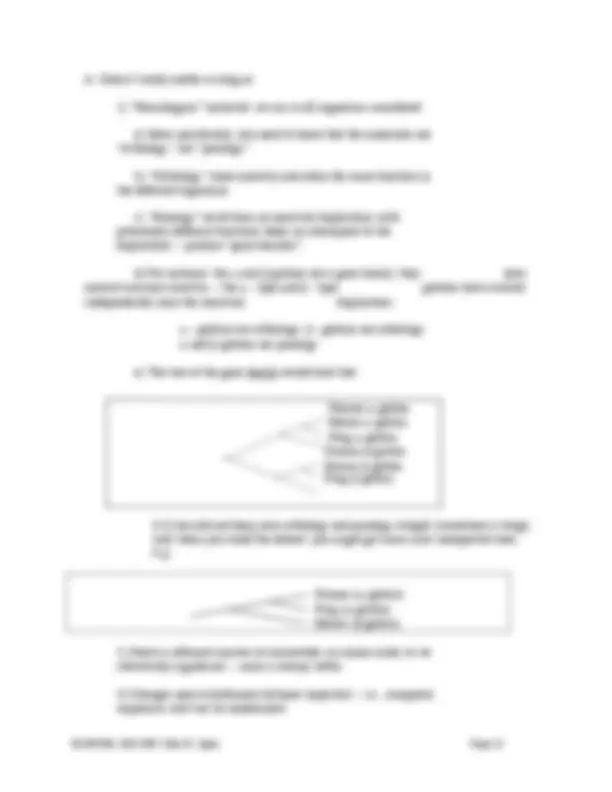
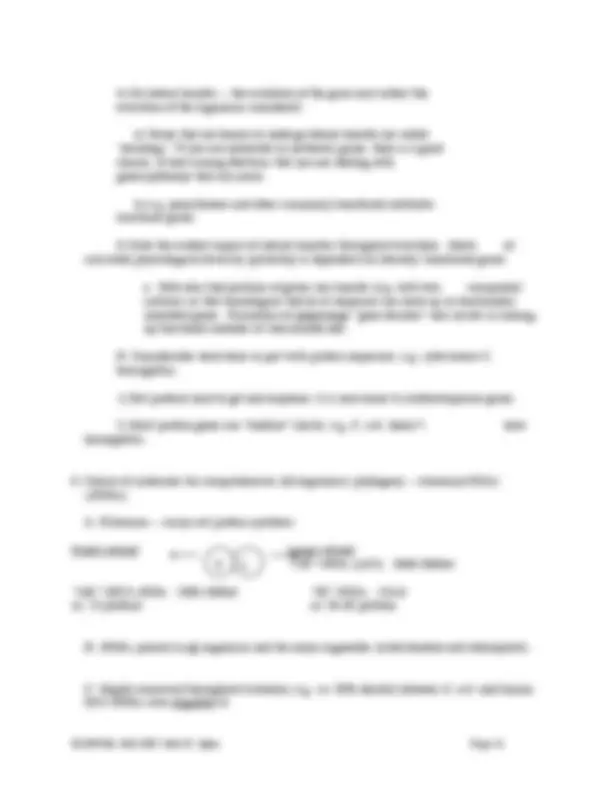
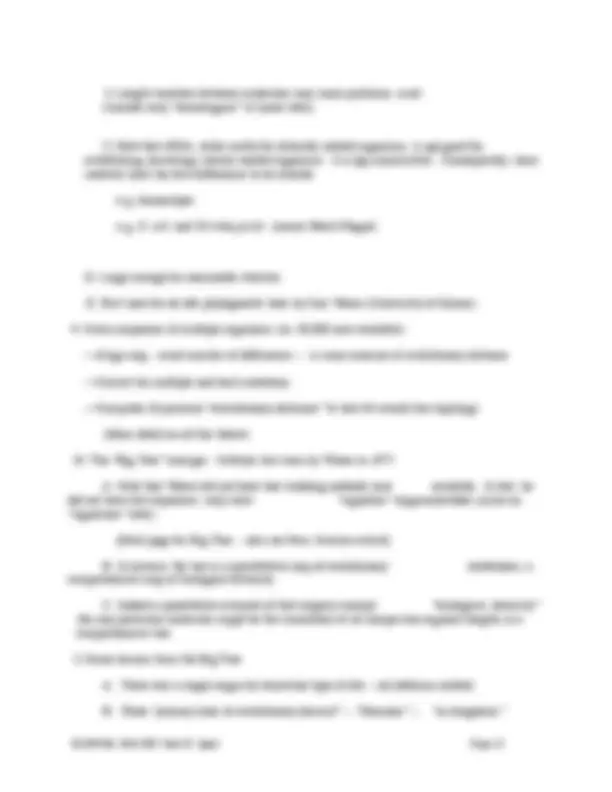
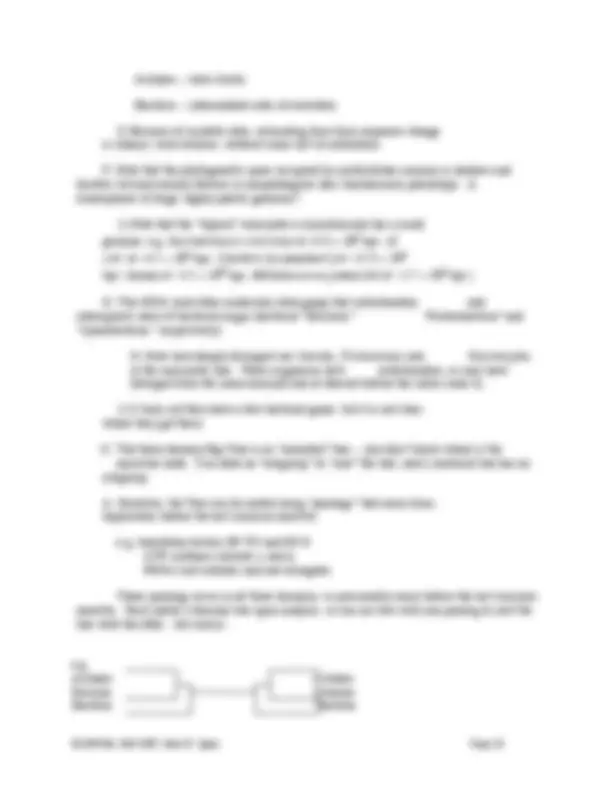

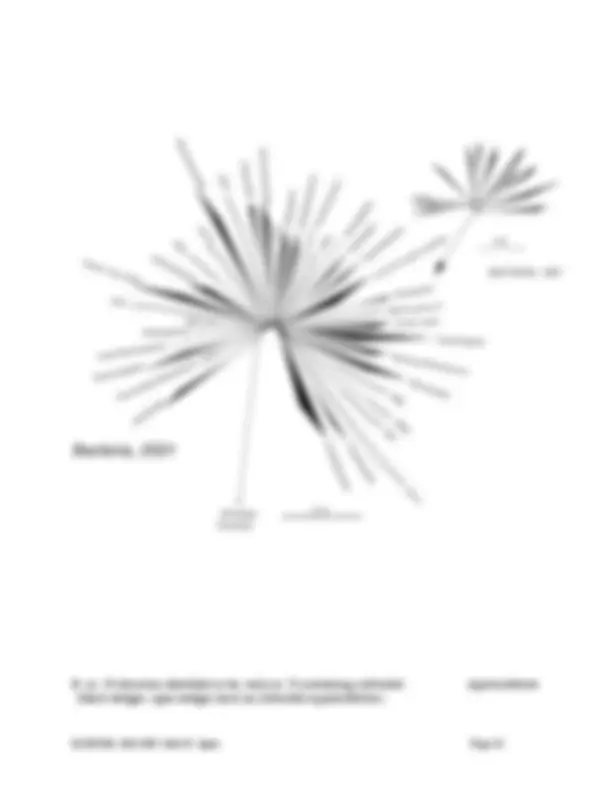
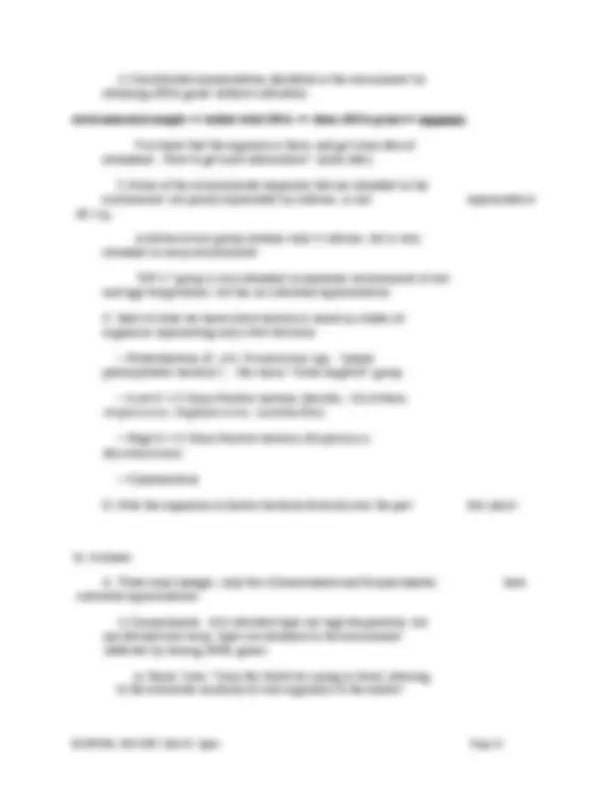
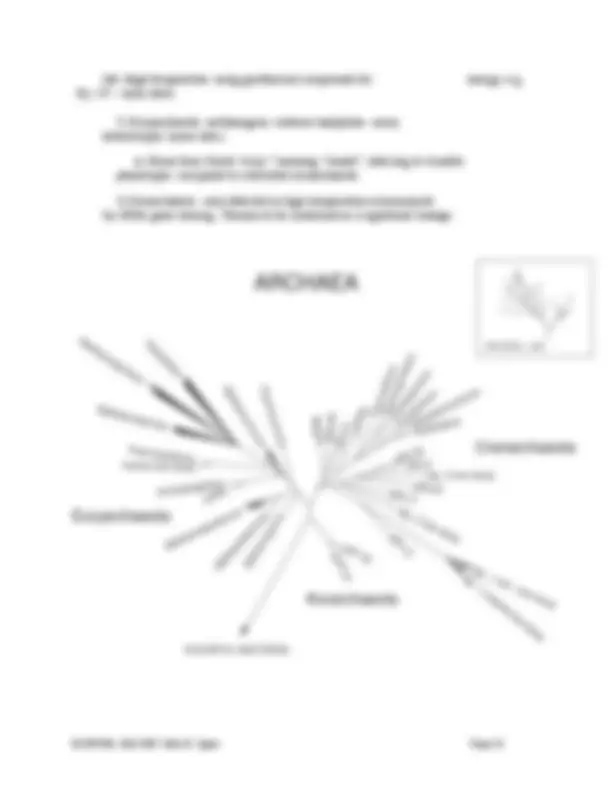
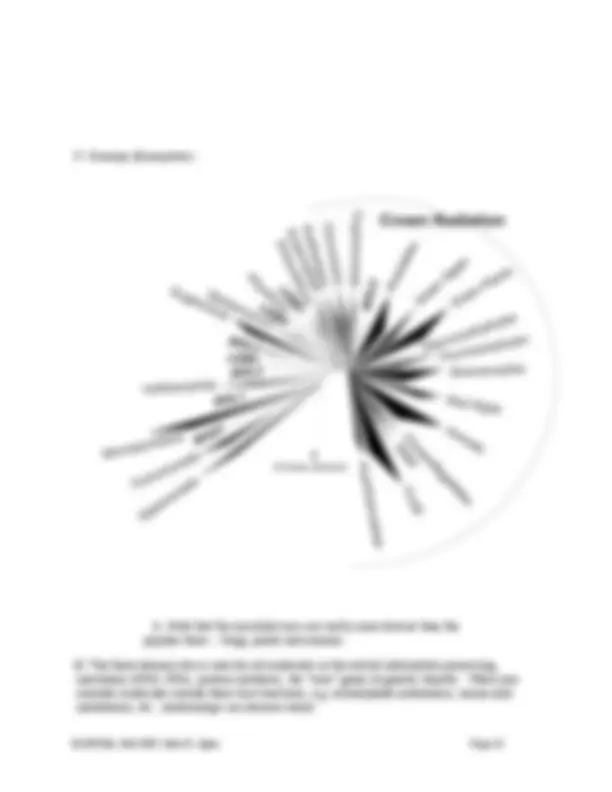
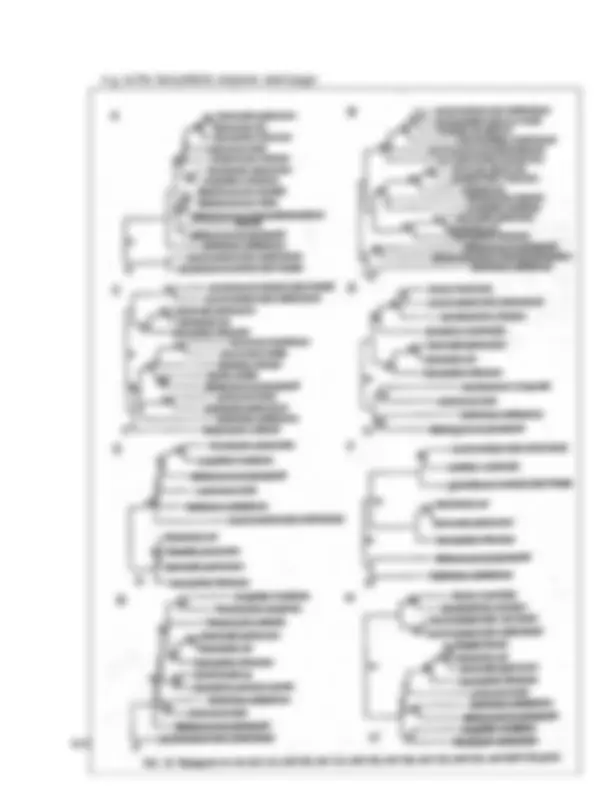






Study with the several resources on Docsity

Earn points by helping other students or get them with a premium plan


Prepare for your exams
Study with the several resources on Docsity

Earn points to download
Earn points by helping other students or get them with a premium plan
Community
Ask the community for help and clear up your study doubts
Discover the best universities in your country according to Docsity users
Free resources
Download our free guides on studying techniques, anxiety management strategies, and thesis advice from Docsity tutors
This document from esgn 586, fall 2007, explores the complexity and diversity of microorganisms, discussing their energy sources, responses to environments, gene regulation, growth, and survival strategies. It also covers the historical focus on macroorganisms and the importance of microbial communities, communication between organisms, and the challenges in taxonomy and phylogenetic relationships.
Typology: Study notes
1 / 28

This page cannot be seen from the preview
Don't miss anything!





















ESGN586 Lecture 2 Fall ’
Readings: Brock , Chapters 1- 5
Chapter 1 - 5 Key Points:
What is a microbe?
Webster’s : A microorganism
Brock: A microscopic organism consisting of a single cell or cell cluster, also including
the viruses, which are not cellular.
FYI: A virus is a genetic element, containing either DNA or RNA that replicates in cells,
but is characterized by having an extracellular state. It is a non-living particle.
Why do we care?
Responsible for SO many things…
Health & The Pathogens—but remember there are only 7 divisions of Bacteria
that have pathogens, and there are no archaeal pathogens.
Refrigeration
Ex: Hurricanes Katrina and Rita
Packaging
How we touch, what we touch
How we are social, or not, with each other. Handle a baby?
Cleanliness—of everything:
What is body odor?
Sleeping Bags
Clothes
Hands
Teeth
Other orifices
How we taste, How we smell, How we hear, How we feel
Microbes are intimately involved in all of these senses.
Environmental Microbiology—Here We Go:
--Obtain energy and nutrients
--Respond to the environment and other organisms
--Regulate genes and metabolism
--Grow and divide
--Survive adverse conditions
diversity is microbial in nature; historical focus aside, most eucaryotes are microbial.
a. Large creatures are comprised of different cell-types, differentiated from a
common germ-line that collectively and interdependently form the functioning
community (the macroorganism).
b. The constituents of communities of microbial organisms are selected upon by the
local chemistry and physical properties, and collectively and interdependently
form the functioning community (e.g. a "biofilm").
In the macro case the organism carries the information for the required cell-types; in the micro
case the environment selects for the suite of required cell-types. Different strategies of life-stuff.
usually paint “prokaryotes” as simple cells:
rods (bacilli, s. bacillus; note contrast with Bacillus , a “genus” name)
cocci (s. coccus)
“spirals” (misnomer—really helices)
“vibrios” (partial helices)
--Long filaments (> 100 μm = 0.1 mm common, e.g. Beggiatoa , Thioploca )
--Branched filaments (e.g. Streptomyces )
--Star-shaped ( Stella )
--Amorphous-shaped (e.g. Sulfolobus )
--Flat-looking (e.g. Haloarcula )
in nature:
Chains (strepto-, e.g. streptococci)
Tetrads—and higher regular clusters
Rosettes
e.g. Planctomyces
Microbes form complex “communities” (ensembles of different organisms— in contrast
to a “population,” which refers to a collection of the same type of organism)
oxymoron. (People who use that term are usually referring to a representative of the bacterial
division “Proteobacteria”)
b. Many different external structures, e.g.:
Flagella, pili, stalks and holdfasts, capsules, sheaths (sometimes with
multiple types of organisms), etc.
c. Many different internal structures, e.g.:
“Nucleoid” (bacterial nucleus), spores, “inclusions” of energy -- reserves
(e.g. sulfur, poly beta-hydroxybutyrate, glycogen), etc.
metabolisms:
a. “Chemoheterotrophs” - obtain energy and carbon from reduced organics, e.g.
Escherichia , Bacillus
b. “Chemoautotrophs” - energy from reduced inorganics (e.g. H 2
S, Beggiatoa ; Fe
Gallionella ); carbon by “fixing” CO 2
c. “Photoheterotrophs” - carbon from organics, energy from light (e.g. Rhodobacter )
d. Photoautotrophs” - carbon from CO 2
, energy from light (cyanobacteria, plants
[the chloroplast is a cyanobacterium!])
a. Extremes of ionic strength—distilled H 2
O to NaCl-saturated brines (south SF
Bay, Dead Sea, e.g. Haloarcula )
b. Extremes of temperature—ca. −5˚C to 113˚C ( Pyrodictium ) to 121°C
c. pH -- pH < 0 to 12
d. All over the planet -- from deep-subsurface to clouds in the sky, any place there
is liquid water and an energy gradient
a. Motility and taxis -- chemotaxis, phototaxis, magnetotaxis
b. Developmental processes -- sporulation ( Bacillus ),
developmental growth phases
( Caulobacter ), metabolic differentiation ( Anabaena “heterocysts” for N 2
fixation)
c. Communication -- between like cells (“Quorum-sensing”) and unlike
(symbioses, antibiotics)
a. For all the differences between different organisms, the underlying
biochemistries are pretty much the same:
DNA/RNA-based information transfer
ATP / NAD(P) chemiosmosis-based energy
same (general) pathways for carbon-metabolism and biosynthesis
b. All life (on Earth) is related ancestrally.
A Pretty Amazing Property of Life!
Describing Microbial Diversity: the Changing Paradigm
mess--but we are stuck with it for traditional reasons.
a. A “natural” taxonomy would be based on evolutionary relatedness:
Thus, organisms in same “genus” (a collection of “species”) would have similar
properties in a fundamental sense.
b. A natural taxonomy of m a crobes has long been possible:
Large organisms have many easily distinguished features, e.g. body-
plans and developmental processes, that can be used to describe hierarchies of
relatedness.
c. Microbes usually have few distinguishing properties that relate them, so a hierarchical
taxonomy mainly has not been possible.
relatively non-subjective, quantitative way to view “biodiversity”, in the context of phylogenetic
maps - evolutionary trees.
a. Slowly evolving molecules (e.g. rRNA) used for large-scale structure; “fast-clock”
molecules for fine-structure.
E.g. the Riftia symbiont?
c. Phylogenetic perspective even on macrobes is quite recent -- say a century, and on microbes
only ca. 20 years. Many microbiology texts don’t have it and many (even most) general
biology texts get it wrong!
A Bit on the Evolution of Evolutionary Thought
Man
Apes
Marsupials
Reptiles
Amphibia
Fish
Invertebrates
Plants
Fungi
Leewenhoek’s “animacules”
Thus, we still deal in “higher and lower” eucaryotes (I try not to use these
terms -- they are dumb), “missing links,” and “primitive” organisms.
a. In its milieu, E. coli is as highly evolved as are we. E. coli is simple (~5× 10
bp genome), we are complex (~3× 10
bps); complexity has nothing to do with
“evolutionary advancement”.
b. Lineages evolve by diversification, "radiation", not “progression”. (!!)
c. There is no such thing as a “primitive” organism alive today. Simple, yes, but
still a finely honed product of 4 billion years under the selective hammer of
the niches that it and its progenetors have occupied.
table -- e.g. Ernst Haeckel, 1866 (Note that Darwin’s “Origin of
Species” was first presented in 1858).
Note “kingdoms” of
Plants, Animals, Protists
(non-plants and animals, mostly
microbial), and
“monera” (procaryotes, in
retrospect) at base.
the next century -- and still is in many/most general texts of biology. The current articulation
is as the “five kingdoms of life”, here taken from a 1969 Science lead article.
speculative, at best
animals)-- a universal phylogeny was impossible
Implicit timeline remained -- “procaryotes”, protists “primitive”
Suggestion that eucaryotic nucleus was derived from a “procaryote”progenitor
turned out to be fundamentally incorrect (the often- cited date of 1.5 billion years ago for
the origin of eucaryotes is B.S.) -
changed the “paradigm” significantly. (ala Thomas Kuhn -- “The
Stucture of Scientific Revolutions”
a) By comparing macromolecular sequences, can extract
evolutionary relationships -- “evolutionary distances” -- between
organisms
principle organisms) quantitatively, so as to reconstruct their
evolutionary histories, e.g. as a “phylogenetic tree.”
a. There are many ways to "relate" molecules. Some subjective ways are:
e.g. immunologically (fractional gross reactivity)
e.g. DNA-DNA “heterologous hybridization” (more below)
But these are difficult (impossible) to precisely quantitate in
terms of relationships
b. The best way is by direct comparison of sequences of nucleic
acids or proteins. This provides “precise” numbers for defining
relationships between molecules -- and, ideally, organisms
A. Consider”
--Organism A • • • A G C U G C C A G U • • •
--Organism B • • • A A C U C C C A A U • • •
Sequence A is 70% identical to Sequence B,
Fractional identity is 0.
Fractional difference is 0.3 (1-0.7)
is meant. Note that gene sequences are not “##% similar”, they are “##% identical”;
protein seqs, on the other hand, can be “similar.”
"homologous" -- of common ancestry. Homologous sequences are
not necessarily identical; identical sequences are not necessarily
homologous (e.g. promoters, translation punctuation, etc.).
B. Do difference (1-identity) count for all pairs of organisms considered. This difference count
is a measure of the extent of evolution - evolutionary distance - separating the pairs of
organisms.
e.g. with organisms A,B,C,D and E:
C. To build relationships, construct a “difference matrix” for organisms A-E:
A 0.1 0.2 0.2 0.4 Fractional Difference
Fractional Identity
Can relate in a “tree”- like figure, a “dendrogram”
A. Doesn’t really matter so long as:
a) More specifically, you need to know that the molecules are
“orthologs,” not “paralogs”
b) “Orthologs” share ancestry and retain the same function in
the different organisms
c) “Paralogs” result from an ancestral duplication, with
potentially different functions taken on subsequent to the
duplication -- produce “gene families”.
d) For instance, the α and β globins are a gene family; they have
ancient common ancestry -- the α - type and β - type globins have evolved
independently since the ancestral duplication:
α - globins are orthologs; β - globins are orthologs.
α and β globins are paralogs
e) The tree of the gene family would look like:
f) If you did not keep your orthologs and paralogs straight (sometimes a tough
call) when you build the dataset, you might get some most unexpected trees,
e.g.:
Human (α-globin)
Frog (α-globin)
Mouse (β-globin)
statistically significant -- more is always better.
sequences must not be randomized.
Human α-globin
Mouse α-globin
Frog α-globin
Human β-globin
Mouse β-globin
Frog β-globin
evolution of the organisms considered.
a) Genes that are known to undergo lateral transfer are called
“xenologs.” If you are interested in metabolic genes, there is a good
chance, at least among Bacteria, that you are dealing with
genes/pathways that can move.
b) e.g. penicillinase and other commonly transferred antibiotic
resistance genes.
microbial physiological diversity (probably) is dependent on laterally transferred genes.
a. Note also that portions of genes can transfer (e.g. with two- component
systems) so that homologous blocks of sequence can show-up in functionally
unrelated genes. Formation of intralineage "gene families" also results in mixing-
up functional modules of macromolecules.
B. Considerable work done in past with protein sequences, e.g. cytochrome C,
hemoglobin.
But proteins hard to get and sequence; it is now easier to isolate/sequence genes.
Most protein genes are “shallow” clocks; e.g. E. coli doesn’t have
hemoglobin.
(rRNAs).
A. Ribosome -- carrys out protein synthesis
Small subunit Large subunit
S L “23S” rRNA (LSU): 3000-5000nt
“16S” (SSU) rRNA: 15 00 - 2000nt “5S” rRNA - 120 nt
ca. 25 proteins ca. 30-40 proteins
B. rRNAs present in all organisms and the major organelles (mitochondria and chloroplasts).
C. Highly conserved throughout evolution; e.g., ca. 50% identity between E. coli and human
SSU rRNAs over alignable nt
is probably not a good idea -- too historically loaded.
C. The eucaryote nuclear line of descent is as old as the "procaryote"
lines
D. Two primary lineages of “procaryotes,” Bacteria (formerly
eubacteria) and Archaea (formerly archaebacteria -- try to avoid using term;
they aren’t bacteria)
E. Note that lines connecting organisms to nodes are not all the same
length -- the evolutionary clock is not constant between different lineages (e.g.
Haloferax vs. Methanopyrus , Aquifex vs. Bacillus , Eucarya in general vs. any
representative of Archaea or Bacteria)
at all stages in the evolution of the line, e.g. Agrobacterium vs.
mitochondrion
Eucarya -- fast clocks
"Time"
indicating: The root of the Big Tree is (presumably deep) on the
bacterial line of descent.
B. This means also that Eucarya and Archaea shared common history after
divergence from Bacteria
machineries.
e.g. similar transcription machineries; Archaea and Eucarya use TATA-binding
proteins whereas Bacteria use σ factors for specification of transcription initiation.
e.g. Archaeal and eucaryal DNA-synthetic machineries far more like one another
than either is to bacteria (for good overview, Bernander, “Archaea and the cell
cycle,” Molec. Microbiol. 29:955-961[1998])
sequences are now available.
A. One database of rRNA sequences -- Ribosomal Database Project:
http://www.cme.msu.edu/RDP/
You can download trees, carry out functions, get programs, etc.
A. This is a diagrammatic tree. The wedge indicates multiple
lineages; the depth of the wedge the depth of the deepest branches. These
groups represent the phylogenetic “divisions” of bacteria (referred to as
“kingdoms” by Woese). There is no formal taxonomic status of these divisions at
this time:
B. ca. 35 divisions identified so far, only ca. 25 containing cultivated representatives
(black wedges; open wedges have no cultivated representatives).